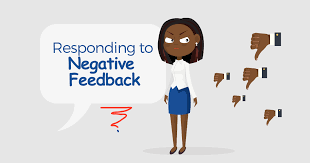
Presenting Negative Feedback
Order Instructions:
Scenario – You recently instituted a “No Smoking” policy in the facility. All employees were notified of the policy change. It was not well-received. As you walk down aisle B in the warehouse, you see a cloud of smoke and then see Chris running to aisle A. You need to talk to Chris.
Describe the real issue, and explain what the most difficult element of this step is for you.
Describe your goal.
Explain what temptation you are most likely to face and how you will resist it.
Explain basic performance concepts, such as how you will get permission, what issues you would consider when choosing the best time to deliver the feedback, and how you will select the place for the conversation.
Write your negative feedback narrative following the ABC model.
Conclude your paper with your insights about the process and your comfort level with it.
SAMPLE ANSWER
Presenting Negative Feedback
The real issue involved in the scenario is lack of co-operation from the employees in relation to the aspect of adhering to the no-smoking policy. Employees in the organization seem not to embrace the policy and are inclined towards breaking it. Taking this issue into consideration, the most difficult aspect of this case is confronting Chris with the issue of smoking as there is no substantial proof that can link him to the cloud that emanated from warehouse. Thus, the problem lies in presenting the negative feedback to Chris without hurting his feelings or making feel disregarded. In relation to this, my goal is to deliver advice Chris against the habit of smoking within the organization without hurting him or making him feel disregarded. Besides, I aim at ensuring that the employ receives my advice and respond to it in an effective way. I want to ensure that the employee comprehends the significance of not smoking within the organization alongside the negative effects that such a habit has on the organization. In addition, I also aim at ensuring that the employee does not become defensive during the confrontational process.
In solving Chris’ problem, I will employ the ABC framework or model. This framework offers a three-step procedure for presenting and receiving feedback. One of the temptations that I can face during the process of confronting Chris is the feeling of wanting to rebuke or criticize him for his action. Moreover, the feeling of fear can also develop inside, as I do not want to annoy the employ. When leaders are faced with a situation in which their juniors seem to ignore the outlined rules and regulations, the aspect of anger is often inevitable (Lu et al, 2011). However, efficient and effective management of anger is a significant aspect that leaders should embrace when confronting their employees over issues. In relation to this, I will ensure that I remain composed and calm when confronting Chris to enable me to accomplish my objective. Listening and providing feedback effective are significant skills for leaders who are focused on improving the performance of firms through effective employee corporation.
Researchers have focused on illustrating why individuals who are providing and receiving feedback often view this process with fear or apprehension (Lu et al, 2011). Lack of adequate training on the part of leaders is always linked to element of fear during the confrontation of employees. Managers who allow fear to develop in them when confronting workers usually wind up proving undesired or unintended responses such as defensive and anger. Using the ABC model will enable address the issue involving Chris in an effective manner.
The first step of the ABC framework will involve the action stage. Here, I will focus on collecting information on the issue surrounding Chris case. For instance, I will conduct a thorough investigation to be sure that Chris was the one involved in smoking in the warehouse. One of the methods that I will employ in achieving this goal is confronting Chris’ close associates or friends, and inquire about the issue from them. While doing this, I will be keen not to leak any information concerning my encounter with Chris at the aisles. Besides, I will also ensure that any information that might link Chris to smoking in the warehouse is kept private. Collection of adequate data on this information is vital in ensuring that I focus on a specific issue when confronting Chris (Van-Dijik & Kluger, 2011). As such, Chris will not perceive my confrontation as an attack to him. Being that Chris was running to aisle A, does not offer a full proof that he was the one smoking in the warehouse. Therefore, collecting adequate information concerning this issue is significant in ensuring that I confront him with adequate evidence linking him to the mistake. The availability of data will play a vital role at this stage as it helps in depersonalizing the opening exchange, which is significant in reducing any dissonant reaction (Van-Dijik & Kluger, 2011). Furthermore, the availability of data will help me in making a confident and accurate statement. Here, my main aim will be to provide a picture of characters that are actionable. As such, this approach will enable Chris view what I am discussing to him and develop the feeling that he can do something about it. At this stage, I will have to deliver the message to Chris. However, I will ensure that this message is delivered after the normal working hours to avoid interrupting Chris from his work. Moreover, this time be suitable for to deliver the message to Chris as delivering the message in-between the working hour can impact negative on Chris’s performance. I will also ensure that this message is delivered to Chris at a quiet and confidential place to avoid interruption or embarrassment that he might face from other employees. As such, I will have to call him in my office.
In the second stage of the ABC model, I will focus on the significance of addressing the issue of smoking in the organization. Here, I will focus on informing Chris about the impact of his behavior on the organization and other employees. This stage will be vital in ensuring that valid reason why the habit of smoking in the organization is not required is provided. As such, this step will ensure that Chris takes accountability and ownership of the feedback or his action. Besides, this stage will help in the establishment of a credible and valid purpose for giving the feedback to Chris. At this stage, the use of abstract statements such as “people often…” and “everyone thinks…” will be avoided as they serve to block any opportunity to engage the employee in discussion concerning the specific effect of his action (Lu et al, 2011). This undertaking will help in ensuring that Chris acknowledges the negative effects of his action and avoid treating the confrontation in a negative way. In addition, this step can help in revealing the reasons why workers are uncomfortable with the no-smoking rule as it will involve a discussion between the two of us.
Lastly, I will focus on establishing the actual remedy for addressing the issue of smoking. In this stage, I will aim at identifying the resources, action plans, and needs that are required in ensuring that workers stop the habit of smoking within the organization (Van-Dijik & Kluger, 2011). This step helps in ensuring that I focus on all workers as opposed to the single worker who was involved in breaking the no-smoking rule. This stage also helps in avoiding time wastage in blame game. As a result, this time can be employed in finding effective solutions to the lack of corporation on the part of workers.
In conclusion, the application of the ABC framework in solving Chris’ case will help in ensuring that the issue of smoking within the organization is handled effectively without any resistance from employees. Furthermore, the application of this framework in solving the issue of smoking in the organization will help in the realization of efficient corporation from workers
References
Lu, K et al. (2011). Examination of a Perceived Cost Model of Employees’ Negative Feedback Seeking Behavior. Journal of Psychology, 145(6), 573-594.
Van-Dijik, D & Kluger, N. (2011). Task Type as a Moderator of Positive/ Negative Feedbacks Effects on Motivation and Performance: A Regulatory Focus Perspective. Journal of Organizational Behavior, 32(8), 1084-1105.
We can write this or a similar paper for you! Simply fill the order form!












